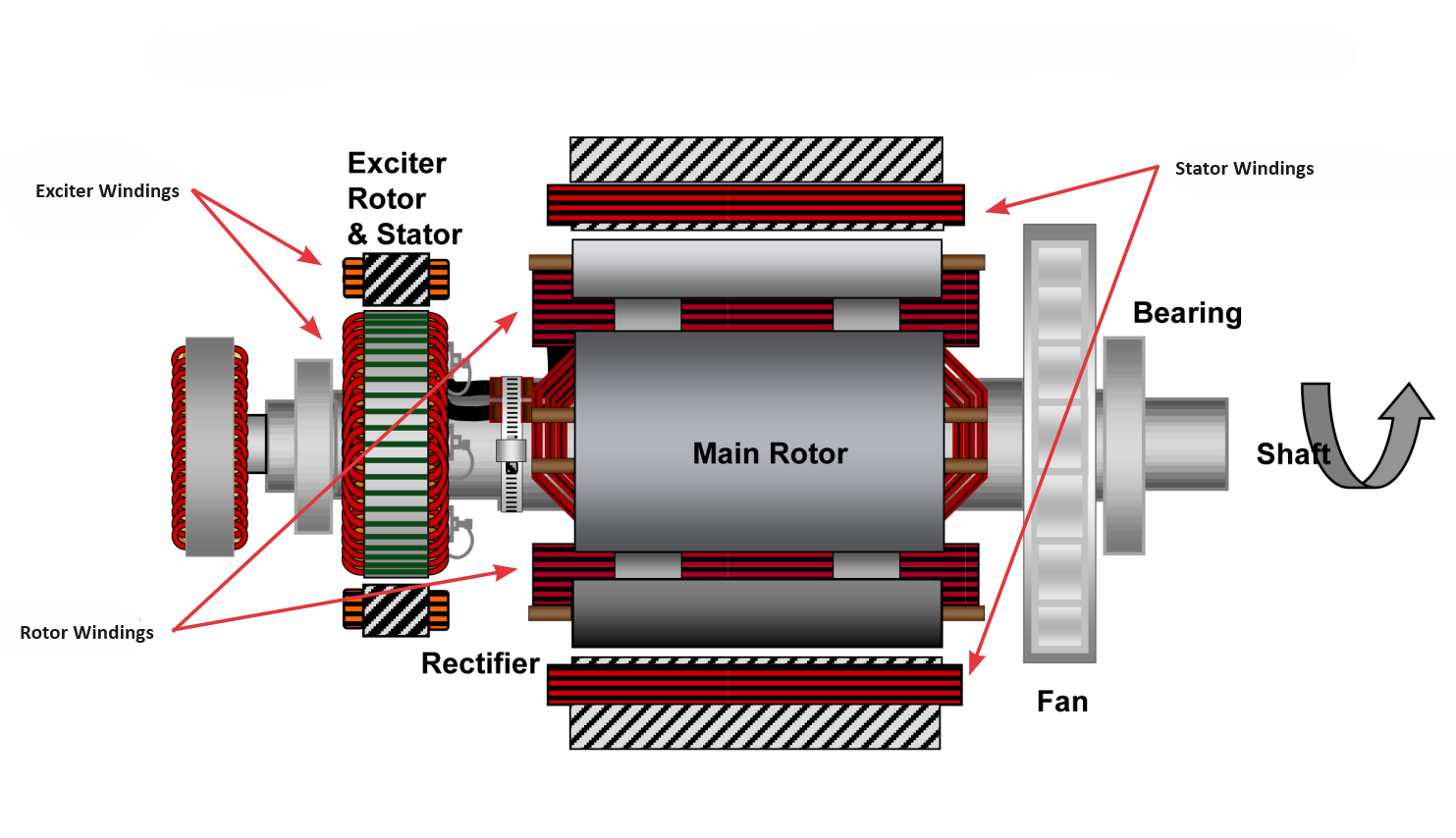This article was originally written by Clifford Power Systems.
1.0 Introduction
When a wire carries electrical current, its temperature will increase due to the resistance of the wire. The factor that mostly influences/limits the acceptable level of temperature rise is the insulation system employed in an alternator. So the hotter the wire, the shorter the life expectancy of the insulation and thus the alternator.
This information sheet discusses how different applications influence temperature rise in alternator windings and classification standards are covered by the National Electrical Manufacturers Association (NEMA).

2.0 Classification Standards Covered by NEMA:
(NEMA) Standard MG1 encompasses the entire machine and includes the requirements for alternator temperature rise. The standard operating ambient temperature (in all cases) is 40°C (104°F).
MG1 defines two duty cycles for the alternator:
- Continuous Duty – for operation 24 hours a day, 7 days a week, under full load conditions.
- Standby Duty – for an emergency power source (EPS) or a standby generator set designed to operate as a backup power source should the principal power source (utility) be lost or fall outside the nominal frequency or voltage requirements.
3.0 Hours Limitation for Temperature Rise:
As the standby category (NEMA MG1 – 22.40) has no defined hour limits, the EPS is considered to typically run for about 200 hours or less a year – considerably fewer than that for a continuous duty application. This higher temperature rise allows more kW to be utilized and is justified by the higher standby output ratings commonly found on most emergency generator sets. However, the insulation of a standby unit will age thermally at about four to eight times that of a continuously rated alternator.
4.0 Insulation Classes:
NEMA MG1 recognizes four classes of electrical insulation of the alternator:
- A
- B
- F
- H
Each of these categories has different characteristics, but the accepted common feature is an anticipated minimum life expectancy of 30,000 hours. The letter signifies the maximum winding temperature allowable while the alternator is operating (if exceeded, the insulation will break resulting in winding burnout).
| Maximum Temerature Rise (40C Ambient) | ||||
|---|---|---|---|---|
| Continuous Duty | ||||
| Temperature Rise | Class A | Class B | Class F | Class H |
| Degrees C | 60 | 80 | 105 | 125 |
| Degrees F | 108 | 144 | 189 | 225 |
| Maximum Temerature Rise (40C Ambient) | ||||
|---|---|---|---|---|
| Standby Duty | ||||
| Temperature Rise | Class A | Class B | Class F | Class H |
| Degrees C | 85 | 105 | 130 | 150 |
| Degrees F | 153 | 189 | 234 | 270 |
5.0 NEMA Standby Ratings:
As standby duty results in fewer hours of operation, NEMA MG1 allows alternator windings to operate at 25°C higher than for continuous duty applications. If used for continuous duty or prime power, the standby alternator’s useful working life will be considerably shortened and reliability may become an issue. Most manufacturers of alternators supply the market with Class H insulation, which meets most of the normal applications and duties encountered. Many manufacturers will supply insulation class H while meeting class F standby ratings with the same machine.
6.0 Application where a lower winding temperature rise is required:
There are a number of generator applications where much a lower temperature rise is required to handle the type of electrical load and duty cycle. Prime power applications such as oil field rigs frequently run throughout the year. Heavy-duty cycles usually specify a maximum winding temperature rise of 70°C at 40°C ambient. A lower temperature rise in prime power applications increases reliability with fewer winding failures because the insulation was subjected to less heat for extended periods.
7.0 Accomplishing Lower Temperature Rises:
The prime factor for a lower temperature rise in all alternators is:
- The size and material of the steel laminations.
- The length of the lamination stack.
- The amount of copper wire used.
This added to the design of the amount of cooling air driven through the alternator, will affect the machine’s output and temperature behavior. A larger alternator is applied for a lower temperature rise with increased copper resulting in lower current density. Increased size and copper permit higher motor starting kVA and lower voltage dips on the application of the load. It also means reduced voltage distortion and overheating, due to harmonics induced by non-linear loads.
The temperature class of the insulation system is typically determined using the test methods outlined in Underwriters Laboratory standard UL 1446 (Systems of Insulating Materials – General).
8.0 Checking Deterioration of Winding Insulation:
Winding insulation should be checked if the generator has been subjected to any of the following:
- Been stationary for a long period without anti-condensation heaters turned on.
- Been subject to an intake of high volumes of water.
- Windings are contaminated with airborne dust and dirt or may have become damp due to high humidity.
- Windings are contaminated with airborne corrosive elements such as salt or chemicals in the atmosphere.
